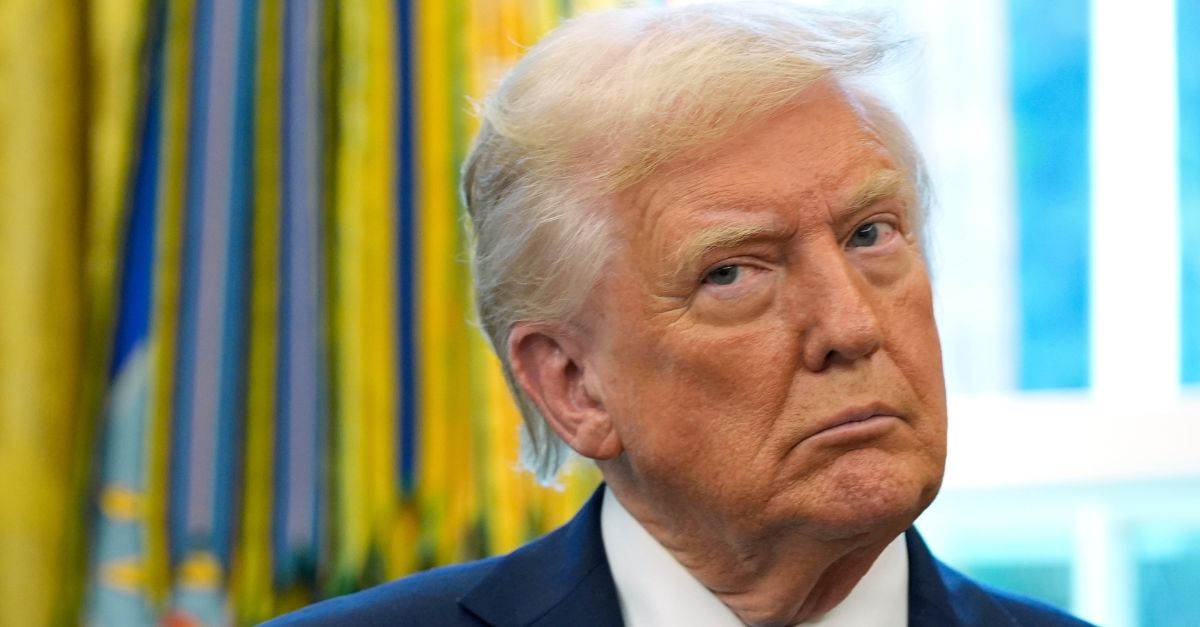
A photo shows President Donald Trump listening during a ceremonial swearing-in of Paul Atkins as chairman of the Securities and Exchange Commission in the Oval Office of the White House on Tuesday, April 22, 2025, in Washington (AP Photo/Alex Brandon).
A federal judge warned the Trump administration on Friday against attempting to bypass a court order prohibiting the government from reducing funds to “sanctuary” jurisdictions.
In the lawsuit, San Francisco and other plaintiffs sued President Donald Trump and others regarding two executive orders issued in January and February. The orders, titled “Protecting the American People Against Invasion” and “Ending Taxpayer Subsidization of Open Borders,” threatened to withhold all federal funds from jurisdictions that were seen as not aligning with federal immigration priorities.
On April 24, Senior U.S. District Judge William Orrick, a Barack Obama appointee, bemoaned the state of affairs as something of a rerun.
In a preliminary injunction, the judge likened the latest funding threats to a series of similarly kiboshed threats issued during the first Trump administration — and blocked them again, reasoning the plaintiffs had a well-founded fear of enforcement warranting an injunction.
Then, a few days passed.
Love true crime? Sign up for our newsletter, The Law&Crime Docket, to get the latest real-life crime stories delivered right to your inbox.
On April 28, Trump issued what the plaintiffs, in a motion to enforce the injunction, termed “yet another” executive order “which triples down on his threat to defund ‘sanctuary’ jurisdictions.”
Quick motions practice ensued, with the government filing a motion in opposition. An expedited hearing was held earlier this week.
On Friday, in a 6-page order clarifying the preliminary injunction, Orrick framed the issue as a question — and then answered it.
“How will the litigation over sanctuary cities and federal funding unfold during the next four years?” the judge asked. “First, the litigation may not proceed with the coercive threat to end all federal funding hanging over the Cities and Counties’ heads like the sword of Damocles.”
Such threats, the judge said, were “explicit” in the earlier executive orders — as well as an implementing directive issued by U.S. Attorney General Pam Bondi — “and that is why they are enjoined.”
The judge’s order attempts to strike a balance, however, stressing that while the government “must proceed within the bounds of the Constitution,” the injunction is not meant to intrude on or block other attempts by the Trump administration “to identify particular grants and funding programs that it believes should be conditioned upon compliance with immigration-related objectives.”
To that end, Orrick says the entirety of the latest executive order is not “improper.”
To make this point, the judge highlights a section where Trump directs Bondi, in coordination with Department of Homeland Security Secretary Kristi Noem, to “publish a list of States and local jurisdictions they have identified as ‘sanctuary’ jurisdictions, and to notify those jurisdictions of their status on the list.”






